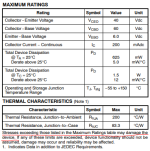I've come a long way in mere weeks because of this incredible community, but I'm at another crossroads... I REALLY need some help here.
Keeping in mind that much of component testing is getting "close enough" when it comes to building, I'm still having some real trouble finding a good baseline for testing components. I have a couple mid-grade multimeters (one with transistor slots), and a couple cheapo TC1s. Not top-tier, but since I can't really buy a Fluke and DCA75 at the moment, they'll have to do.
@Brett & @owlexifry suggested making an RG Keen tester on breadboard, which I did. Used a TC1 to come up with resistor combos that pretty much hit 2.2m and 2.472k on the nose. The 2nd TC1 came up with the same number, within 1 ohm. Even ran the "self test" calibration on them a few times, although I'm not really sure that does much...
Then I tested the resistor combos with both multimeters (fresh batteries) - one said 2.443k and one said 2.455k. Tried two different sets of leads on each, one with probes, one with clips. I didn't expect them to be that different than the TC1s.
So... who do I trust? Since both pairs of testers came up with similar results (TC1s were an exact match, MMs were very close to each other), it must come down to whatever wild card the MM test leads introduce or the basic mechanics (voltage/current) of how each kind of tester operates. In a situation like an RG Keen tester which seems to need exact resistor values, I'm not sure which tester to trust.
I went with the TC1s numbers and set up the Keen tester, including a battery reading very close to 9v. I'll need to test some Ge soon, but first I tried some Si to see how they fared. Here are the results of a basic, TO-92 2N2222A:
Keen Tester w/ MM#1 reading DC v on the 2.472k resistor: 202 hfe (2.02v)
Keen Tester w/ MM#2 reading DC v on the 2.472k resistor: 204 hfe (204v)
Transistor Testing Slots in MM#1: 191 hfe
TC1/TC2 - 285 hfe
I was little surprised at how long the Keen testers took to land on the final reading - they started high and and took several minutes to tick down about .15 -.2 volts, and keep in mind this is Si.
The Keen testers and MM#1's hfe slot tester are all very close. The TC1s read way higher, and this is something I observed across several different transistors. I'm not saying one is right and one is wrong, but again - who do I trust? Which would be the reading that best reflects the hfe in say, a fuzz pedal circuit? This will be much, much more important when I test Ge.
Obviously the hfe slots won't work well for Ge, and it sounds like the TC1 isn't great with those either. I'll have to trust one of the MMs in a Keen tester, but again, I need to get those resistor values bang-on and keep the voltage close to 9v. Even with a trimpot I'd need to set it to 2.472k with the help of a MM, and their resistance reading were quite different than both TC1s. Getting a DCA55/75 would seem to solve the problem, but some say that their 5mA testing current isn't optimal... plus, it doesn't test resistors or capacitors - I'd still need to trust a TC1 or MM for that! Ack!
I totally get "close enough for rock n roll", "use your ears" and all that, but... can someone please help simplify/clarify where I should go from here? I'm in the weeds with all these discrepancies!
PS:
- a battery at exactly 9v doesn't stay there long, so powering a Keen tester seems tricky. Is it ok to be a little higher/lower than 9v? I have a rechargeable 9v lithium battery that I'd love to use, but is closer to 9.3v fully charged.
- I accidentally popped a few PNPs into the Keen tester when it was set up for NPN and vice versa. I realized my mistake, reset and restested them - they seem ok, is there any concern that they might still be damaged? I added the 220r resistor to +9v after doing that a few times... Missed that advice from @Brett the first time around! Yeesh...
Missed that advice from @Brett the first time around! Yeesh...
Keeping in mind that much of component testing is getting "close enough" when it comes to building, I'm still having some real trouble finding a good baseline for testing components. I have a couple mid-grade multimeters (one with transistor slots), and a couple cheapo TC1s. Not top-tier, but since I can't really buy a Fluke and DCA75 at the moment, they'll have to do.
@Brett & @owlexifry suggested making an RG Keen tester on breadboard, which I did. Used a TC1 to come up with resistor combos that pretty much hit 2.2m and 2.472k on the nose. The 2nd TC1 came up with the same number, within 1 ohm. Even ran the "self test" calibration on them a few times, although I'm not really sure that does much...
Then I tested the resistor combos with both multimeters (fresh batteries) - one said 2.443k and one said 2.455k. Tried two different sets of leads on each, one with probes, one with clips. I didn't expect them to be that different than the TC1s.
So... who do I trust? Since both pairs of testers came up with similar results (TC1s were an exact match, MMs were very close to each other), it must come down to whatever wild card the MM test leads introduce or the basic mechanics (voltage/current) of how each kind of tester operates. In a situation like an RG Keen tester which seems to need exact resistor values, I'm not sure which tester to trust.
I went with the TC1s numbers and set up the Keen tester, including a battery reading very close to 9v. I'll need to test some Ge soon, but first I tried some Si to see how they fared. Here are the results of a basic, TO-92 2N2222A:
Keen Tester w/ MM#1 reading DC v on the 2.472k resistor: 202 hfe (2.02v)
Keen Tester w/ MM#2 reading DC v on the 2.472k resistor: 204 hfe (204v)
Transistor Testing Slots in MM#1: 191 hfe
TC1/TC2 - 285 hfe
I was little surprised at how long the Keen testers took to land on the final reading - they started high and and took several minutes to tick down about .15 -.2 volts, and keep in mind this is Si.
The Keen testers and MM#1's hfe slot tester are all very close. The TC1s read way higher, and this is something I observed across several different transistors. I'm not saying one is right and one is wrong, but again - who do I trust? Which would be the reading that best reflects the hfe in say, a fuzz pedal circuit? This will be much, much more important when I test Ge.
Obviously the hfe slots won't work well for Ge, and it sounds like the TC1 isn't great with those either. I'll have to trust one of the MMs in a Keen tester, but again, I need to get those resistor values bang-on and keep the voltage close to 9v. Even with a trimpot I'd need to set it to 2.472k with the help of a MM, and their resistance reading were quite different than both TC1s. Getting a DCA55/75 would seem to solve the problem, but some say that their 5mA testing current isn't optimal... plus, it doesn't test resistors or capacitors - I'd still need to trust a TC1 or MM for that! Ack!
I totally get "close enough for rock n roll", "use your ears" and all that, but... can someone please help simplify/clarify where I should go from here? I'm in the weeds with all these discrepancies!
PS:
- a battery at exactly 9v doesn't stay there long, so powering a Keen tester seems tricky. Is it ok to be a little higher/lower than 9v? I have a rechargeable 9v lithium battery that I'd love to use, but is closer to 9.3v fully charged.
- I accidentally popped a few PNPs into the Keen tester when it was set up for NPN and vice versa. I realized my mistake, reset and restested them - they seem ok, is there any concern that they might still be damaged? I added the 220r resistor to +9v after doing that a few times...






